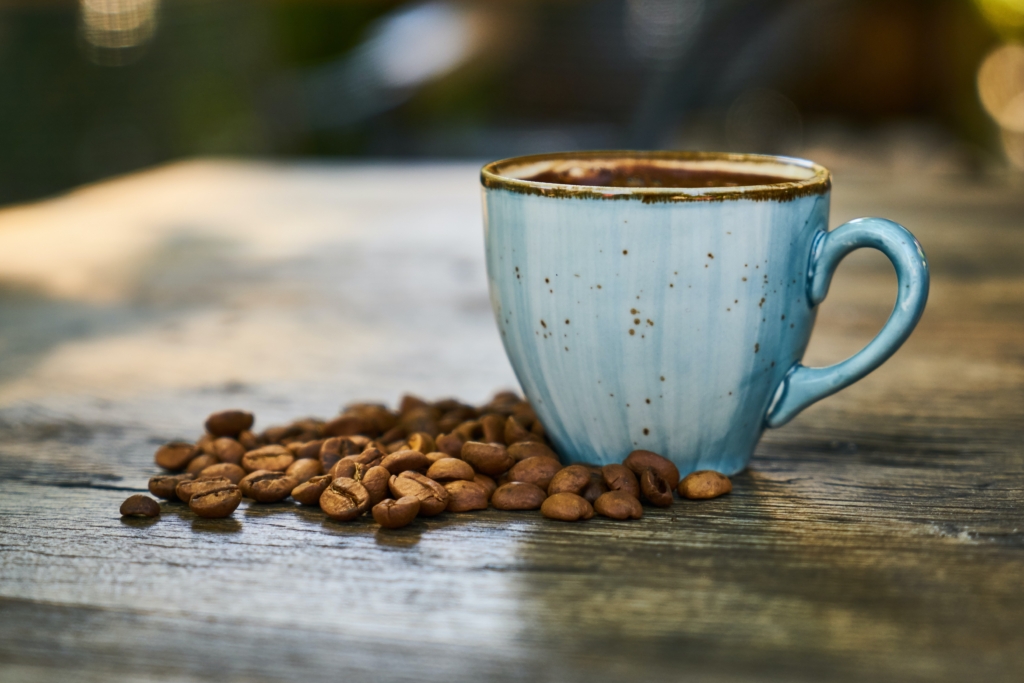
Choosing your coffee beans
Table of Contents
Choosing the coffee bean or blend that is perfect for you is often difficult due to the amount of information there is. We aim to alleviate that pain and help you to choose the right bean or blend. Below are some factors you should consider when making this decision.
Type of coffee bean
There are a lot of types of coffee beans, but there are two types of beans which make up the majority of the coffee in the world.
- Robusta coffee beans are able to be grown in harsh conditions and require less water to grow. This makes them more economical to grow, but the trade off is that the beans are earthy and bitter.
- Arabica beans are widely used in coffee shops and offer a delicate flavor with complex acidity, making them perfect for a clean and sweet, everyday coffee.
Roasting
There are three types of roasting strength when it comes to coffee and they have distinct properties.
- Light roasts have higher acidity and tea like body which makes them best for filter coffee.
- Medium roasts have a nice caramelised sweetness and balance between acidity and body, and can be used for filter and espresso coffee. This makes them a good choice for a versatile drink.
- Dark roasts have a very bold and rich chocolate flavour. This is down to the roasting rather than the bean itself. Only use dark roasts for espresso coffee.
Processing method
“Processing method” refers to the way the coffee bean is separated from the coffee cherry fruit. This is one of the most important steps in the beans journey and as such it has a big impact on the flavor of the coffee bean. There are two main methods of doing this.
- The Washing method entails removing the outer fruit from the bean and soaking it in freshwater. Doing so slowly removes the mucilage layer around the bean. This results in a bean with high acidity and great clarity of flavor.
- The Natural method is carried out by picking the coffee cherry and drying it in the sun on a raised bed with the fruit heavy skin still intact. At which point fermentation occurs and the flavours of the skin impart onto the coffee beans, giving them a fruity flavor, low acidity, and a heavy body. The process is perfect for high altitudes, and hot climates where water is scarce.
Quality of coffee
It makes sense that the quality of the coffee bean makes a big difference in the quality of the coffee. There are three sections of quality. Coffee is marked on a scale of one to one hundred.
“Speciality” coffee is the highest grade of bean. The bean must have a score of eighty or more to be considered “Speciality”. Although it is often hard to find in supermarkets, and it can be expensive, this type of coffee is worth it.
“Standard Commercial Grade” coffee is the type of coffee that is carried in abundance by supermarkets, more often than not this is what you are drinking. With scores ranging from fifty to seventy nine you might not always get the same flavor as a previous batch.
The quality of coffee is defined by many things. One is when in the life cycle the fruit is harvested. This has a big impact on the coffee bean and can result in beans having very different flavor profiles. Another is the processing method, as we saw above that can greatly affect the quality of the coffee bean. A third important factor for the quality of the coffee bean is the growing altitude. In general, the higher the altitude the better flavor the coffee beans have. This is because the cooler temperatures cause the coffee cherry to mature slowly, providing a denser bean which has a higher concentration of the sugars and acids which provide the coffee bean with its flavor.
Roast freshness
A huge factor needing to be considered when deciding what coffee bean you want is the freshness of the beans. There are two widely held myths about coffee beans; one says coffee can never go bad, and the other says that you must use all your coffee beans within two weeks of opening the bag or tin. These are both wrong, however they might be closer to the truth than people realise. Coffee does go bad, but it does not go bad two weeks after opening. In fact, coffee beans are at their best between seven and fourteen days after the beans are roasted. Not every package in the supermarket has its roasting date printed on it. Instead it often has a best before date. Be very careful about these packages of coffee as they are sometimes putting the best before date on it so they don’t have to put the roasting date on the package. Of course, it is not always possible to find a package with the roasting date on it but do not use the best before dates as a guide. Instead aim to finish your coffee within three weeks of purchase. You can stretch this to four weeks but after the fourteenth day the flavor of the coffee will drop off sharply.
Blend or single origin?
The difference between these two options is that a blend is a mixture of beans that can a mix of different varietals by the farmers or a mix of different origins by the roasters, and a single origin bag of coffee beans contains all the same beans from a specific location where you are able to trace your coffee back to the cooperative, farm or washing station. Single origin coffees allow the natural flavours of the origin, region, varietal and process to shine through in the cup where as a blend can be used to create new flavour profiles, improve the balance of a coffee or reduce the cost of a product.
Point of origin for coffee beans
Coffee beans are predominantly grown in three areas of the world: Central and South America, Africa, and Asia. These three geographical locations have vastly different qualities. Coffee from Central and South America produces sweet coffees with a very clean taste. This is true not only for single origin beans but also for blends containing these beans. African coffee beans feature beautiful fruity flavors with a deep and complex flavor. Lastly, Asian coffee beans are very earthy, with a syrupy body, and have a flavor profile containing savoury and herbal notes.


25% off
your next order
Enjoy the world's best coffee, freshly roasted & delivered to your door. Sign up to our mailing list for a welcome pack and 25% off your next Cafédirect order!

Thanks for
joining our
mailing list
A welcome pack is on its way and you get 25% off your next Cafédirect order!
